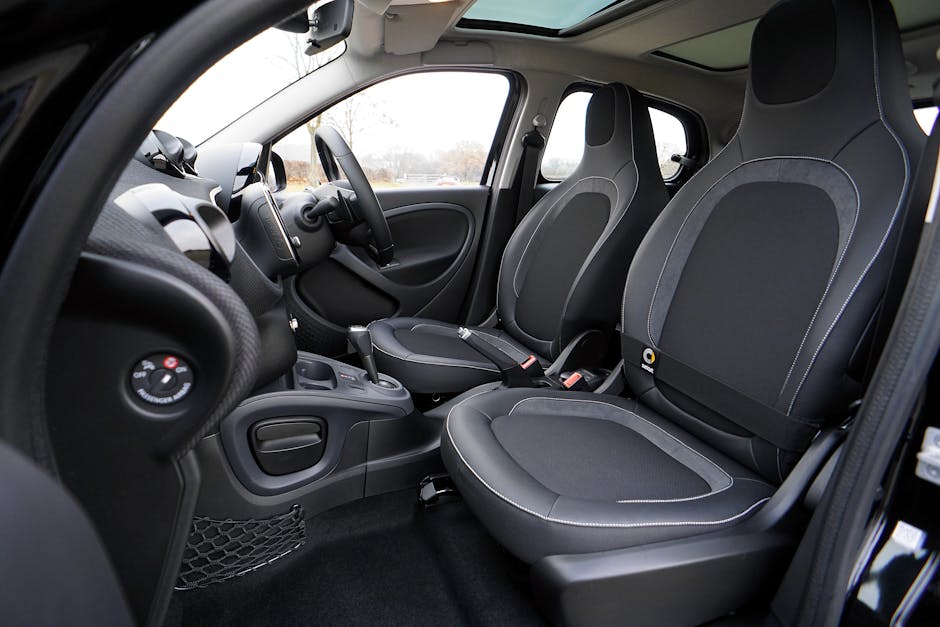How to Choose Coverage for New Drivers
As a new driver embarking on the exciting journey of getting behind the wheel, one crucial aspect that cannot be overlooked is choosing the right insurance coverage. Navigating the world of insurance can be overwhelming, especially for those who are new to the road. Understanding the ins and outs of coverage options, factors that impact premiums, and the importance of adequate protection is essential for every new driver. In this comprehensive guide, we will delve into the intricacies of selecting coverage for new drivers, empowering you to make informed decisions that align with your needs and budget.
The Basics of Insurance Coverage

Before diving into the specifics of choosing coverage for new drivers, it’s essential to grasp the fundamental concepts of insurance. Insurance is a contract between you and an insurance company that provides financial protection against unforeseen events such as accidents, theft, or damage to your vehicle. When it comes to auto insurance, there are several types of coverage options to consider, each serving a unique purpose:
Liability Coverage

Liability coverage is mandatory in most states and covers damages or injuries you cause to others in an accident. It includes bodily injury liability, which pays for medical expenses, and property damage liability, which covers repairs to the other party’s vehicle or property.
Collision Coverage

Collision coverage pays for repairs to your vehicle in the event of a collision, regardless of fault. This coverage is particularly important for new drivers who may be more prone to accidents due to lack of experience.
Comprehensive Coverage

Comprehensive coverage protects your vehicle from non-collision related incidents such as theft, vandalism, or natural disasters. It provides added peace of mind knowing that your car is covered in a wide range of scenarios.
Uninsured/Underinsured Motorist Coverage
This type of coverage kicks in if you’re involved in an accident with a driver who doesn’t have insurance or lacks sufficient coverage to pay for damages. Uninsured/underinsured motorist coverage ensures that you’re not left financially vulnerable in such situations.
Personal Injury Protection (PIP)
PIP covers medical expenses for you and your passengers regardless of fault in an accident. It can also include coverage for lost wages and other related expenses, providing a comprehensive safety net for drivers.
Determining Coverage Needs
When selecting coverage for new drivers, it’s crucial to assess your individual needs and circumstances. Factors such as your vehicle type, driving habits, budget, and the level of risk you’re willing to assume play a significant role in determining the right coverage for you.
Vehicle Type
The type of vehicle you drive can impact the coverage you need. For instance, if you drive a brand new sports car, you may want comprehensive coverage to protect your investment. On the other hand, if you drive an older vehicle with lower value, you may opt for minimal coverage to save on premiums.
Driving Habits
Your driving habits also influence the coverage you should choose. If you have a long commute or frequently drive in high-traffic areas, you may want to consider higher liability limits to protect against potential accidents. Similarly, if you have a clean driving record and rarely drive, you may be able to opt for lower coverage levels.
Budget Considerations
Insurance premiums can vary significantly based on the coverage options you choose. It’s essential to strike a balance between adequate coverage and affordability. While it may be tempting to opt for the minimum required coverage to save money, it’s crucial to consider the potential financial repercussions of being underinsured in the event of an accident.
Risk Tolerance
Every driver has a different level of risk tolerance when it comes to insurance coverage. Some may prefer to have extensive coverage for maximum protection, while others may be comfortable taking on more risk to lower premiums. Understanding your risk tolerance and comfort level is key to selecting the right coverage for your needs.
Factors Impacting Premiums
Insurance premiums are influenced by a variety of factors that insurers use to assess risk and determine pricing. Understanding these factors can help new drivers make informed decisions when choosing coverage:
Age and Experience
Young and inexperienced drivers often face higher insurance premiums due to their increased risk of accidents. Insurance companies view new drivers as higher-risk individuals and adjust premiums accordingly. As you gain experience and maintain a clean driving record, your premiums are likely to decrease over time.
Driving Record
Your driving record plays a significant role in determining your insurance premiums. Tickets, accidents, or other violations can result in higher rates, as they signal increased risk to insurers. Maintaining a clean driving record is essential for keeping premiums affordable.
Vehicle Type and Usage
The type of vehicle you drive and how you use it can impact your insurance premiums. High-performance cars, luxury vehicles, or vehicles with a high theft rate typically incur higher premiums. Additionally, using your vehicle for business purposes may result in higher rates due to increased mileage and exposure to risk.
Location
Where you live can also affect your insurance premiums. Urban areas with higher rates of accidents, theft, or vandalism generally have higher insurance rates compared to rural areas. Factors such as crime rates, traffic congestion, and weather conditions in your area can influence the cost of coverage.
Credit History
Insurers often consider your credit history when calculating premiums. A strong credit score can result in lower rates, as it indicates financial responsibility and lower risk. On the other hand, a poor credit history may lead to higher premiums, as insurers perceive you as a higher-risk individual.
Discounts and Savings
Insurance companies offer various discounts and savings opportunities that can help reduce your premiums. As a new driver, you may be eligible for discounts such as good student discounts, safe driver discounts, or discounts for completing driver education courses. Taking advantage of these savings opportunities can make insurance more affordable.
Comparing Quotes
One of the most effective ways to find the right coverage for new drivers is to compare quotes from multiple insurance companies. Shopping around allows you to see different coverage options, pricing, and discounts available, empowering you to make an informed decision. When comparing quotes, be sure to consider the following:
Coverage Limits and Deductibles
When comparing quotes, pay close attention to coverage limits and deductibles offered by each insurer. Higher coverage limits provide more protection but may come with higher premiums, while higher deductibles can lower your premiums but require more out-of-pocket expenses in the event of a claim.
Customer Service and Reputation
Choose an insurance company with a strong reputation for customer service and claims handling. Reading reviews, checking ratings from independent agencies, and seeking recommendations can help you gauge the quality of service provided by each insurer.
Discounts and Savings Opportunities
Look for insurers that offer discounts and savings opportunities tailored to new drivers. Good student discounts, safe driver discounts, and discounts for completing driver education courses can significantly reduce your premiums, making insurance more affordable.
Additional Coverage Options
Consider additional coverage options that may be beneficial for new drivers, such as roadside assistance, rental car reimbursement, or gap insurance. These add-ons can provide extra protection and peace of mind in various scenarios.
Expert Opinions
Seeking advice from insurance experts or agents can be invaluable when choosing coverage for new drivers. An experienced agent can help you understand your options, recommend suitable coverage based on your needs, and answer any questions you may have about insurance.
Common Misconceptions
There are several common misconceptions about insurance coverage for new drivers that can lead to confusion or misinformation. It’s essential to dispel these myths to make informed decisions:
Myth: Minimum Coverage Is Sufficient
One common misconception is that minimum coverage is enough to protect new drivers adequately. While minimum coverage meets legal requirements, it may not provide enough protection in the event of a serious accident. Consider your individual needs and risks when selecting coverage.
Myth: Comprehensive Coverage Is Expensive
Another myth is that comprehensive coverage is costly and unnecessary for new drivers. While comprehensive coverage may have higher premiums, it offers extensive protection for your vehicle in a wide range of scenarios, making it a valuable investment for new drivers.
Comparative Analysis
Comparing coverage options, pricing, and features from different insurance companies is essential to find the best coverage for new drivers. Conducting a comparative analysis can help you identify the right balance between coverage and affordability, ensuring that you get the protection you need at a price you can afford.
FAQs
Q: How can I lower my insurance premiums as a new driver?
A: You can lower your insurance premiums by maintaining a clean driving record, taking advantage of discounts, selecting higher deductibles, and comparing quotes from multiple insurers.
Q: Is it necessary to add additional coverage options as a new driver?
A: While additional coverage options are not mandatory, they can provide extra protection and peace of mind in various situations. Consider your individual needs and risks when deciding whether to add extras like roadside assistance or rental car reimbursement.
Conclusion
To wrap things up, choosing coverage for new drivers is a critical decision that requires careful consideration of various factors. By understanding the basics of insurance coverage, assessing your individual needs, and comparing quotes from multiple insurers, you can select the right coverage that provides adequate protection at a price you can afford. Remember to factor in your vehicle type, driving habits, budget considerations, and risk tolerance when making this important decision. Ultimately, investing in the right insurance coverage is not just a legal requirement but also a smart financial decision that safeguards you against unforeseen events on the road.




